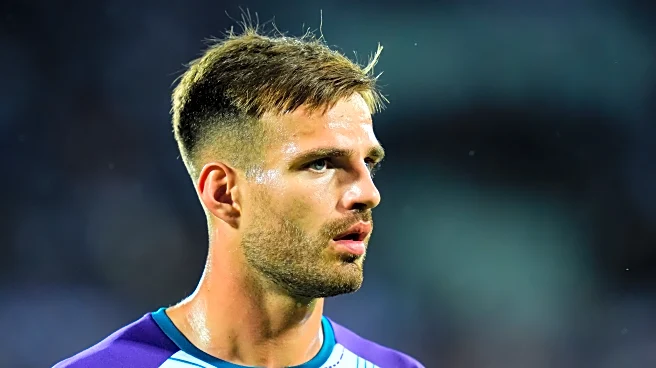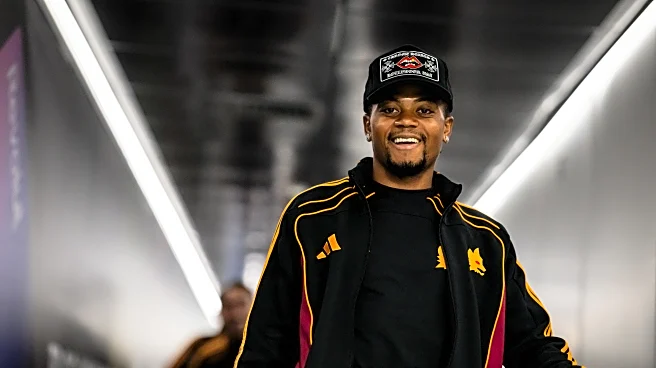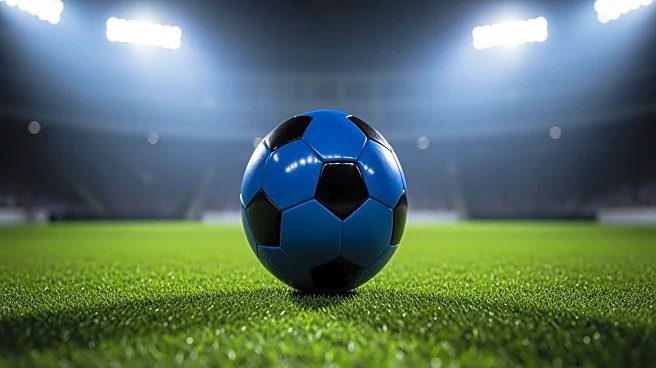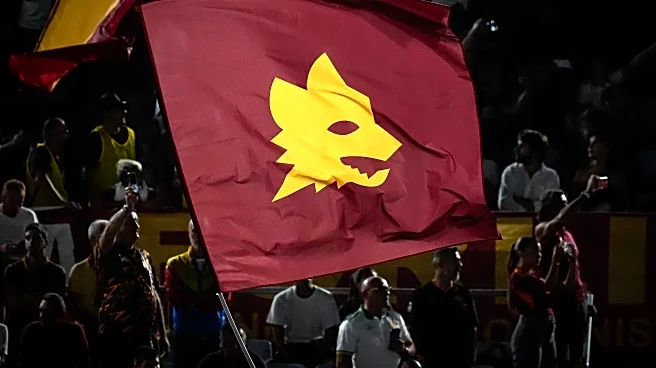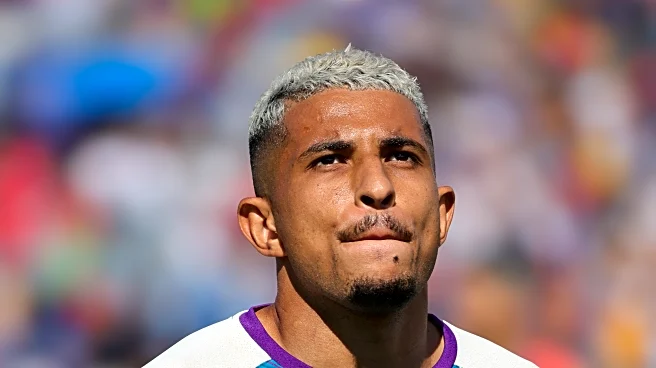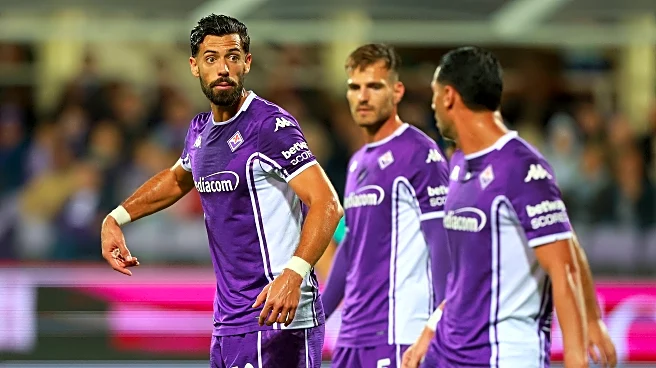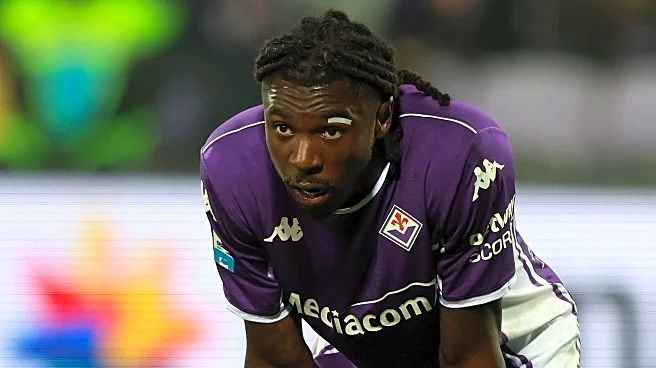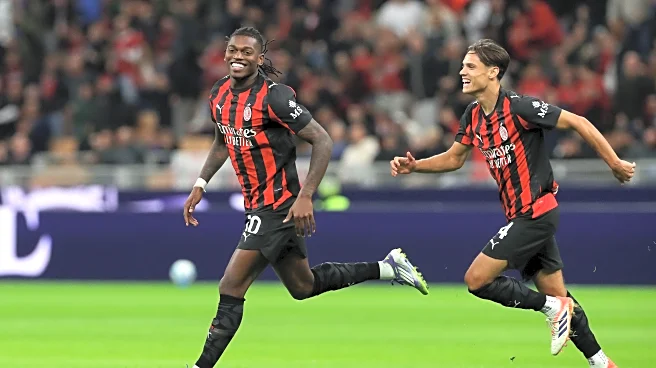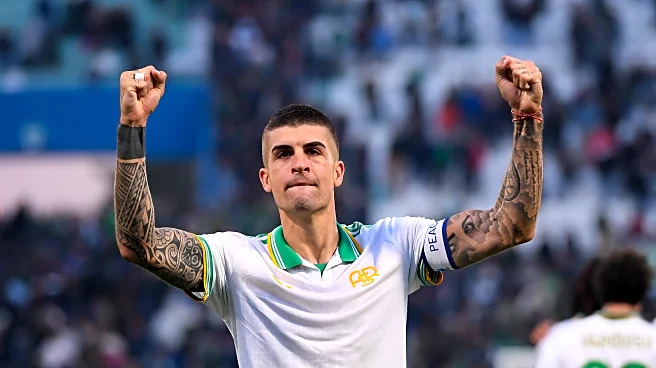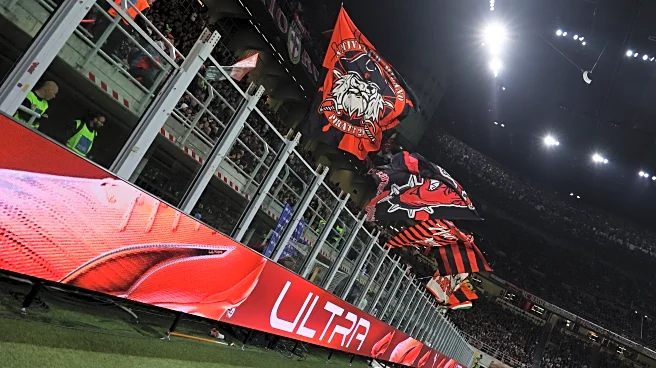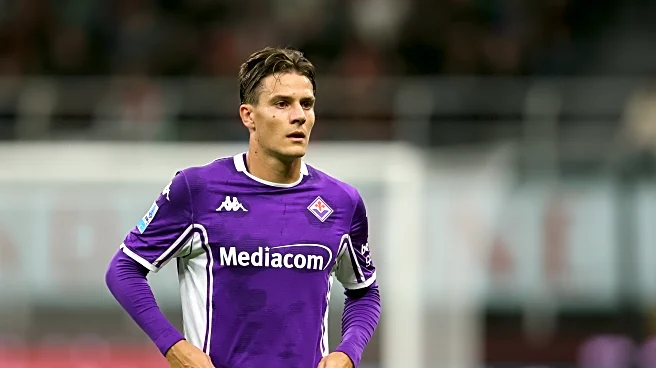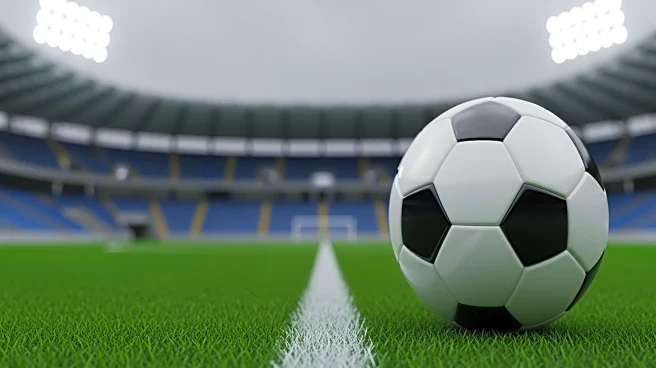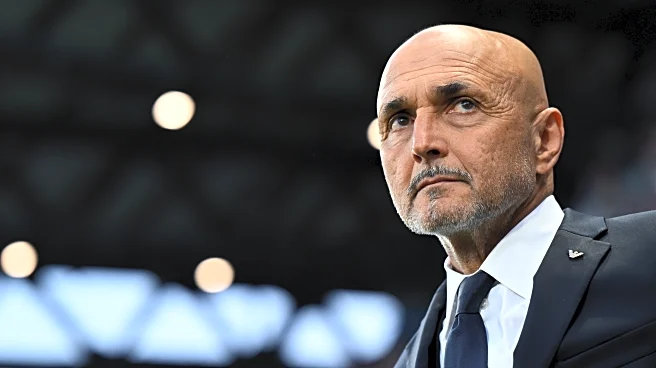Now that we’re 2 months into the season and Fiorentina has yet to win a Serie A game, it’s probably time to figure out what’s going wrong. While there’s no single reason for the team to be quite so ass, my diagnosis is that a lot of the ass starts at the back. I’m specifically referring to Marin Pongračić, who currently leads the race for “Worst Viola Player of the Season” by a decent amount. What’s gone wrong?
Brought in to replace Nikola Milenković, the Croatian never looked comfortable and committed
numerous errors to start last year. Fortunately, Pietro Comuzzo was ready to replace him, but Pongračić eventually clawed his way back to relevance and had 2 good months towards the end of last year before reverting to form. Despite looking the part—big, strong, fast, comfortable on the ball, very aggressive—his lapses in concentration and curious lack of force mean he’s somehow less imposing even than Luca Ranieri.
I’m not here to break down every error he’s made because that would take a lot of time and I’m not getting paid professional analyst money. I did rewatch Fiorentina’s past 4 Serie A games and watch him in buildup, though, to see if my suspicions about the way he’s undermined the team were correct. These examples aren’t exhaustive but I think they’re evidence of certain patterns. To make things easier to identify, I’ve circled the CBs in red, the CMs in teal, and the opposition in green.
at Pisa
Pisa was extremely lucky not to win the first Derby Toscana since 1994. A lot of that came from Fiorentina’s inability to get the ball into midfield because Pisa pressed the defense so well. Give the noisy neighbors credit for coming out hard but this is ridiculous.

Look at this spacing. All 3 centerbacks are in the left half of the pitch. By sitting so narrow, they crowd the center and make it easy for Pisa to press them: the Nerazzuri need just 3 guys to press 5 Viola players, allowing them to leave more bodies farther back. There are some reasons to compress space on the ball but this is very bad. Where’s Ranieri supposed to go with the ball?

This wasn’t a one-off because here we are moments later with the same problem, but amplified. Ranieri’s got it on the wing again and his fellow defenders are squeezed in next to him. With Fiorentina’s midfield trying to stay between the CBs, they’re all within touching distance, allowing Pisa to press 6 players with just 3. Ranieri’s only pass is either a long switch to Dodô (off-screen on the right touchline), which he can’t hit consistently and is thus a bad idea, or dumping it back to Marí, who’ll then either go back to the keeper or thump it long. There’s no way to progress the ball through the middle.

Here’s something a little different. David de Gea has the ball from a goal kick. Fiorentina’s theoretically shifted to a back 4 with Ranieri at LB, but Dodô‘s much higher up on the right. That leaves Pongračić acres of space to motor into if de Gea plays it to him. If he makes that run into a wider area, Pisa’s left CF would have to open up, vacating the middle and potentially allowing one of the midfielders to drop in and get on the ball. Instead, Pongračić stands there. De Gea eventually went long and Fiorentina lost the ball.

Here’s another example of that failure to build from deep. Mandragora’s dropped into where Pongračić has been hanging out. With Dodô high up out of frame, all Marin has to do is move out to the right and he’s completely free. Instead, he’s loafing next to Marí, who’s turned away to pass to Ranieri, who’s immediately closed down and has to dump it back to de Gea to clear. When Dodô’s this high, the outside CB has to stretch wide; otherwise, Pisa can press 3-v-4 and still force the ball back to de Gea.
at Milan

Milan didn’t even bother pressing Fiorentina’s defense all that much, instead focusing on cutting off the supply into midfield. That allowed the Rossoneri to stay compact and get numerous runners forward as soon as the Viola defense turned the ball over by hoofing it long or trying to jimmy it into a tight space. Look at how narrow Milan can press high up, crowding the center of the pitch and forcing everything wide. That’s where the space is and Pongračić is helpfully standing 4 yards away from Marí. By moving wide, he’d at least force Milan to move around more, but from where he is, he doesn’t change the angle on a ball into midfield. In fact, here’s the next step.

Mandragora’s bounced the ball back to Pongračić, who’s stepped infield. Ranieri’s stayed wide for the simple out ball and even has a bit of space now, but the way into midfield is blocked. Rafa Leão’s stayed central, obviously preferring that Ranieri get the ball than a midfielder. Milan controls 4 Viola players’ space with just the front 2, allowing the midfield to maintain its shape.

And here we are again. This time, Ranieri’s also guilty of staying too narrow, although at least he has the plausible deniability of tucking in to allow a skip pass out to Fagioli or Gosens on the left. Milan can again press all 3 Fiorentina CBs with just 2 because they’re so narrow. Now imagine if Pongračić had gotten this ball in a wider position: he’d be able to find Nicolussi Caviglia infield or Dodô up the line. Instead, he goes back to Marí, who in turn goes back to de Gea, who does what de Gea does back there and floats it towards the center circle, where Milan wins the second ball and goes on the attack.
vs Roma

Gian Piero Gasperini’s Roma posed a completely different issue because he’s dedicated heart and soul to 1-v-1 pressing. Spreading out wouldn’t force the Giallorossi to commit another body into pressing because they’re already committed. The difference, though, is the passing angles. Pongračić is very narrow here, as usual. Ranieri’s only option is back to Marí. But imagine the spacing if Marí were farther right and Pongračić had opened up more: Roma would’ve had to spread out, leaving Fiorentina’s midfielders much more room to move around and shake their markers. Instead, the guys pressing the defense can bend their runs to prevent a forward pass, making the 2nd line of pressure’s job much easier.

Here’s another example. Pongračić and Ranieri are squeezed in again. That allows Roma to press 3-v-3 at the back and form a box around HNC, who recognizes that he’s caged and tells Marí to go to Pongračić. That wouldn’t accomplish, of course, because Manu Koné can start wider than Pong, allowing him to both press and cut off the out-ball to Dodô. If the outside CBs stretched wider, they’d need to trust Marí enough to make the longer pass (in fairness, iffy) but they would widen the passing avenues into HNC and company in the middle.

Nicolussi Caviglia is running for his life and has easy backwards options, but then what? Ranieri and Marí can both be pressed by the same guy, so dumping it to them doesn’t give them enough time to do anything. They’re essentially out of the play. Pongračić could push wide, giving HNC a chance to swing it wide. Worst case scenario is that Tsimikas has to pull wider as well, which at least spreads the Giallorossi out and means they aren’t all closely connected and ready to pounce on any turnover in the middle, giving each other easy options to go the other way.

By the second half, the defenders eventually started coming up with some solutions to the man-marking. Here, they’re still very narrow but Ranieri’s stepped into midfield, pinning his man. This gives de Gea a pretty clear pass out to Gosens, who’s dropped deep and has lots of room. Pushing a CB high in these deep builup situations, by the way, isn’t a new thing for Fiorentina. Vincenzo Italiano realized it was a solution to a parallel problem a couple years ago.

Here’s Ranieri pulling the same trick. Gosens hasn’t dropped in this time and neither has Dodô; this would probably work better with one of them coming back to help. However, Ranieri’s high positioning basically pins another Roma player back, giving his fellow defenders a bit more time to hit a long ball to the wings. Unfortunately, neither of them is great at that, but Luca’s at least trying to create that space.
vs Bologna

Bologna, like Roma, use a ferocious man-to-man scheme. Maybe that’s why Ranieri’s got a solution to that press almost immediately: he’s moving forward even as Pongračić turns back, forcing Riccardo Orsolini to track him into the middle and opening a pass to Gosens, who’s dropped deep. This works because Bologna’s rightback Emil Holm doesn’t want to stick too close to Gosens here and leave Jhon Lucumí 1-v-1 against Moise Kean. When the Goose gets the ball, he has time to turn and find a teammate. The move ends with Fagioli badly missing a through ball for Kean in the space that Holm vacated. Promising stuff, right?

Haha, nope. Pongračić decides to take charge and motors into the middle. He found Fagioli, who had no choice but to bounce it back to Marí, who eventually gave it to Pongračić again, who’d by now ended up on the left sideline. The Croatian tried to hack it clear with his weaker left foot and got closed down, leading to a throw in his own third. His desire to move into the middle undermined Fiorentina’s entire structure and put the team in another negative situation.

Marí’s the guilty party now, dropping all the way back and bringing his marker with him. Pongračić could push wide, like Ranieri has on the other side, or move higher up. At least that way a single Bologna player wouldn’t be able to take him and Marí out of the play while also closing down de Gea. Again, though, this one’s on Marí. He should have stepped up into midfield, forcing Castro higher up and giving de Gea more time on the ball; maybe one of his teammates could’ve shaken free.

The narrow positioning strikes again. Pongračić and Marí are so close to Ranieri that they don’t serve any purpose other than getting their markers into the middle, making a pass into midfield impossible. Pongračić especially should get a little wider so Ranieri can skip Marí and go straight to Dodô. Instead, the ball goes through all 3 CBs before reaching Dodô on the far side and he has to go long to Kean, losing the ball down the line and allowing Bologna to attack again; this is where the Rossoblù get their second goal, in fact.
Conclusions
This isn’t all on the players. Pioli’s instructed his defenders to stay very narrow, it seems, and very close together. My guess is that he’s 1) hoping to give Dodô more space on the right to isolate and cook his man, and 2) trying to block off the middle of the pitch when Fiorentina loses possession. There’s also the risk of the centerback pulling too wide and getting trapped, which is one of the primary goals of any good press: push the ball to a defender on the touchline and make them thump it down the line, where the angles make winning possession back more likely.
Pongračić, though, is guiltier in my book. He starts too narrow, which takes space away from the midfielders and prevents the ball from going through the middle. His tendency to turn inside only exacerbates the problem. Against teams that man-mark high up, he’s often very passive, just standing around and taking himself out of the play rather than actively participating in the buildup.
Contrast him to Ranieri, who plays with so much heart. Luca knows he’s not the most technical player but he’s smart and works hard. One of his trademarks, particularly against a man-marking side, is to motor forward, taking his marker away and allowing a midfielder (usually Fagioli) to drop in and conduct the buildup. Against a man-marking system, getting the outside CBs running vertically is so important because it deforms the opponent’s shape. At the very least, it means that, when the Viola lose the ball, the attacker marking Ranieri is that much farther from goal.
Pongračić made a few of those runs, particularly in the second half against Bologna, and created tangible benefits; his burst forward started the move that ended with Emil Holm getting sent off. Getting him higher up means Dodô can drop in to receive possession in the first phase and carry the ball forward. Alternatively, it allows a midfielder to drop in like Fagioli does on the left. Generally speaking, it’s better to have a midfielder on the ball than a defender because midfielders are generally better technically and more likely to keep moves going. Maybe the Bologna game will flip the switch and Pongračić will start getting up and down more.
Against the more zonal presses like those from Pisa and Milan, getting forward isn’t as important as getting wide. That’s where the time and space are. What concerned me more in those games, though, was how often Pongračić would get the ball and have a midfielder, often Mandragora, come deep to retrieve it. Instead of giving it up, though, Pong would wave him off and try to progress the ball himself. All too frequently, he’d just go sideways to Marí or back to de Gea, or try too hard and lose it.
That sums up my frustrations with Pongračić: he plays with an unearned arrogance. His grabby, overly physical marking irritates me to no end due to the number of fouls he concedes (22 this year, 2nd most in Serie A) but it’s how he snatches responsibility away from others and misuses it. We’ve all played with someone like that and it’s incredibly frustrating. The helplessness of watching it every week is almost as bad, especially with Pietro Comuzzo right there. Pongračić has every tool he needs to be a very good defender but it’s just not happening, and he’s dragging the whole team down.
